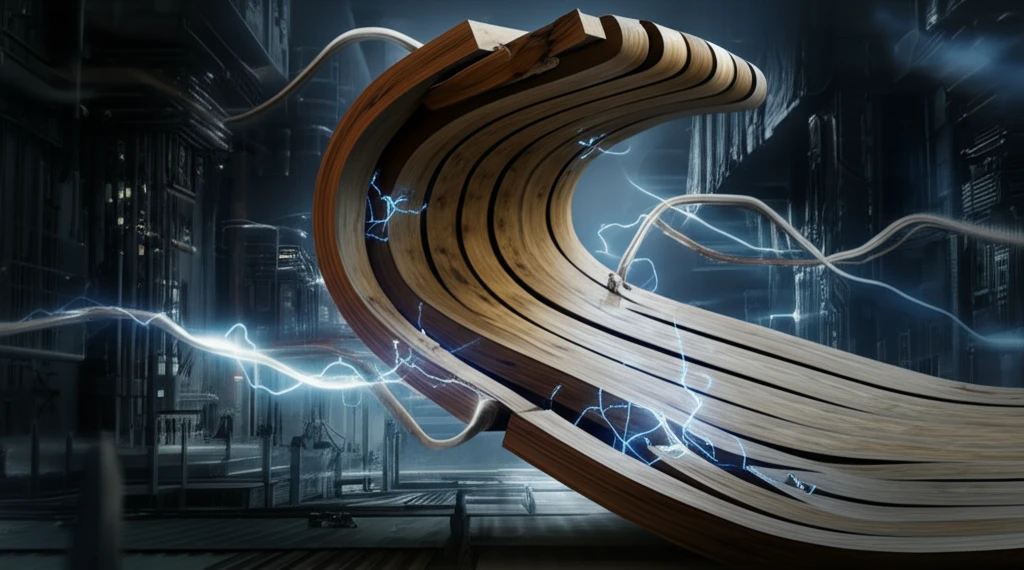
Unlocking Wood's Potential: How Understanding Ductility Can Revolutionize Construction
"Explore the hidden strength of wooden panels and how harnessing their ductility could lead to safer, more sustainable buildings."
In the world of construction, wood offers a unique blend of sustainability and strength. Modern modeling techniques, particularly the shear field girder method, are commonly used to analyze wooden panel structures. However, these methods often focus on ideal scenarios, potentially overlooking the full capabilities of wood, particularly its ductility.
Ductility, the ability of a material to deform significantly without fracturing, is a key characteristic of wooden panels. This property allows wooden structures to withstand substantial stress and deformation, making them resilient in the face of extreme loads or unexpected events. The nonlinear behavior of the bond between the wood's frame and its sheathing plays a crucial role in this ability to endure significant deformation before failure.
Recent research has focused on assessing and better understanding the ductility of different wooden panel configurations. By using advanced FE models, scientists are exploring how variations in panel design impact the overall load-deformation behavior of these structures. This exploration promises to unlock new possibilities for using wood in construction, leading to more durable and sustainable buildings.
Why Ductility Matters: The Science Behind Wood's Strength

While current models often consider ideal shear field conditions, real-world wooden panels behave differently. True ductility in wooden panels becomes apparent when stress is applied perpendicularly to the edges of the sheet. Structures with ideal shear fields tend to exhibit constant bond stresses, resulting in minimal plastic capabilities under elastic-plastic material behavior.
- Enhanced Resilience: Ductile materials can deform under stress, absorbing energy and preventing sudden collapses.
- Improved Safety: Buildings constructed with ductile materials are better equipped to withstand earthquakes, high winds, and other extreme events.
- Sustainable Design: Utilizing the full potential of wood's ductility allows for more efficient material use and reduced environmental impact.
The Future of Wood Construction: Embracing Ductile Design
As research continues to illuminate the benefits of ductile design, the future of wood construction looks promising. By incorporating these findings into building codes and engineering practices, we can unlock the full potential of wood, creating safer, more sustainable, and more resilient structures. This deeper understanding paves the way for designs that capitalize on wood's unique ability to deform and adapt, ensuring structural integrity even under the most demanding conditions.
